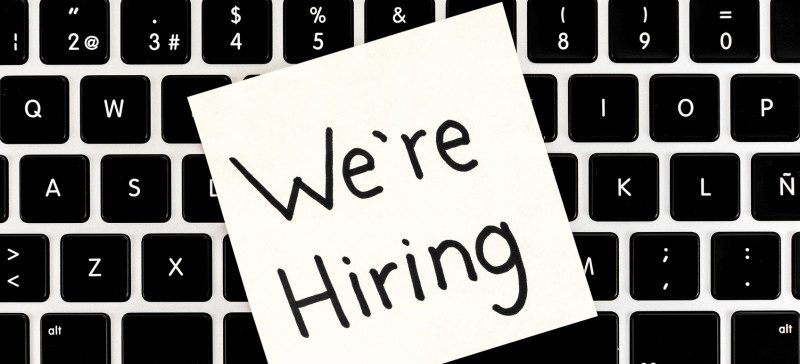Intuitively we all know that a diverse workforce helps us all to grow and drive positive change. We saw this come from the top recently when Prime Minister Scott Morrison Declared the public service should value diversity, Morrison stated “a commitment to diversity should encompass diversity of viewpoints within the APS. There is compelling evidence that this helps teams find answers to complex problems by bringing together people who approach questions from different points of view. It’s vital that the APS avoid the sort of stale conventional wisdoms and orthodoxies that can infuse all large organization”.
Then at a state level we see the Premier of NSW, Gladys Berejiklian, include in her priorities to ‘Implement best-practice productivity and digital capability in the NSW public sector and drive public sector diversity by 2025. Through:
- having 50 percent of senior leadership roles held by women
- increasing the number of Aboriginal people in senior leadership roles
- ensuring 5.6 percent of government sector roles are held by people with a disability’[1]
Also at the local council level we have research from The Office of Local Government and LGNSW that showed 13% of general managers of NSW councils were female in 2016[2].
Therefore, it’s out there for us in the Australian public sector. We know we need to collectively tackle this, and the outcomes are not just better for the running of government departments, agencies and entities but better for society.
I carry the view that improving diversity starts in the recruiting process. Therefore, in this article we’ll explore ways that you can recruit for diversity.
Before we get stuck in though, let’s talk a definition of what diversity is for the purpose of this article. Essentially diversity can fall into two buckets. I feel Harvard Business Review puts it best;
Inherent diversity involves traits you are born with, such as gender, ethnicity, and sexual orientation. Acquired diversity involves traits you gain from experience: Working in another country can help you appreciate cultural differences, for example, while selling to female consumers can give you gender smarts. We refer to companies whose leaders exhibit at least three inherent and three acquired diversity traits as having two-dimensional diversity.[3]
Here is the key bit -> diversity recruiting is the practice of hiring candidates using a process that is free from biases for or against any individual or group of candidates. It absolutely must remain merit-based and still find the best possible candidate. But it’s structured to give all applicants, regardless of background, an equal opportunity.
Live Talent Communities Key to Increasing Diversity in Sourcing
An anchor point to increasing diversity is to operate a live talent community. A live talent community is a vehicle where passive candidates (the holy grail in some instances right?) engage and learn about an employer till the point where they are ready to apply, and the right job has come up. Many benefits are already out there in the market such as the median candidate response time to all communication is 17 minutes, 20 days is the median time to hire candidates that are in live talent communities (69% faster than industry average), 27% of candidates in a live talent community who accept an invitation to be on a shortlist for an open role and importantly 56% of all hires from companies using live talent communities are female.
Here are 4 Quick Fire Actionable Points You Can do Today
- Focus Engagement Where Diverse Candidates Are
We live in the digital economy today, with so many places for communities to gather we have a plethora of options of where we can engage. The benefit this creates is diluting the need to scatter gun out and the ability to focus in messaging to diverse communities. Whether this be in larger social media platforms, or in news and information portals designed for diverse communities
- Get Your Diverse Employees to Invite Connections to Join the Talent Community
Candidate referrals are nothing new. BUT normally we need a job requisition and then the referral must quickly get to know us. By leveraging a live talent community, you can immediately get all your diverse employees to refer family, friends and ex-colleagues, who one day could be a good fit, to join the live talent community immediately. Building a relationship with the diverse candidate and improving your employer brand.
- Ensure the Employer Brand Resonates Welcoming Diversity
Internally there may be consensus on the value and importance of diversity and inclusion. But does this resonate with external candidates? Make sure that you build content and create conversation that you value the views and opinions of people from all backgrounds. Ensure that this is seen and also nothing should ring truer considering we’re operating in the public sector.
As this grows, you will find diverse candidates seeking you out. Then you have a live talent community to further engage them till the time is ready for them to join.
- Removing bias with AI
An element that comes up whenever I discuss increasing diversity, is how do we remove bias. As a starting point this is the right and fair thing to do. But also key for all public sector recruitment and selection is that it is legislated by acts such as the Government Sector Employment Act 2013 which is a statutory framework for NSW Government sector employment and the Local Government Act 1993 which has the requirements for councils. Each state and territory have their own of course.
If you’re using a live talent community a simple fix to this is to leverage the artificial intelligence that is available in select few leading Applicant Tracking System providers. This way the platform filters for the job-specific requirements, ensuring an impartial shortlist with no conscious or unconscious bias.
There are many more action points we can take, so please share your experiences on how we can increase diversity in the public sector.





Leave a Reply
You must be logged in to post a comment.